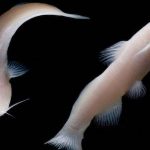Gray whales off Oregon Coast consume millions of microparticles per day
Researchers estimate that gray whales feeding off the Oregon Coast consume up to 21 million microparticles per day, a finding informed in part by...
Dry days trigger leaves to send a surprising growth signal telling roots to keep...
Scientists at the Sainsbury Laboratory Cambridge University (SLCU) have discovered a new molecular signalling pathway, triggered when leaves are exposed to low humidity, that...
Global analysis on pollinators in cities: Wild bees and butterflies are at particular risk
Butterflies are being hit hardest by urban growth. Shrinking habitats and food availability are causing their populations to decline. The same applies to many...
Wildfire smoke downwind affects health, wealth, mortality
Smoke particulates from wildfires could cause between 4,000 and 9,000 premature deaths and cost between $36 to $82 billion per year in the United...
Completing genome of rusty patched bumble bee may offer new approach to saving endangered...
A detailed, high-resolution map of the rusty patched bumble bee's genome has been released, offering new approaches for bringing the native pollinator back from...
AI reveals hidden traits about our planet’s flora to help save species
In a world-first, scientists from UNSW and Botanic Gardens of Sydney, have trained AI to unlock data from millions of plant specimens kept in...
AI reveals hidden traits about our planet’s flora to help save species
In a world-first, scientists from UNSW and Botanic Gardens of Sydney, have trained AI to unlock data from millions of plant specimens kept in...
Study finds combustion from gas stoves can raise indoor levels of chemical linked to...
About 47 million homes use natural gas or propane-burning cooktops and ovens. Researchers found that cooking with gas stoves can raise indoor levels of...
All-electric rideshare fleet could reduce carbon emissions, increase traffic issues
Two major ridesharing companies have promised all-electric fleets by 2030 in an effort to reduce their carbon footprint. To understand additional impacts of this...
Aviation turbulence strengthened as the world warmed
New research shows that clear-air turbulence increased in various regions around the world from 1979 -- 2020.




















